
My three dogs haven’t worked a day in their lives. Unless you consider napping, eating, and demanding lovin’s work. That’s my oldest boy, Doogie Howser, on the cover. (Shout-out to Hollywood Feed for providing his cover-worthy wardrobe.) He’s 9 years old, and he is the very best boy. Doogie’s brought me — and, I’m certain, all who’ve encountered him — so much joy (and unsolicited slobbery kisses), so, in that sense, you could say he has put in some work. He also provided crucial insight and editorial assistance for this cover story and is awaiting his paycheck.
We thought it’d be cool to search the city for other animals putting in the time — to brighten people’s days, relieve anxiety, greet guests, or entertain the masses. We found dogs (lots of dogs), cats, ducks, fish, and even goats working various jobs in Memphis. We hope you’ll enjoy — as much as we did — getting to know more about these hard workers and how they keep business going around town. — Shara Clark
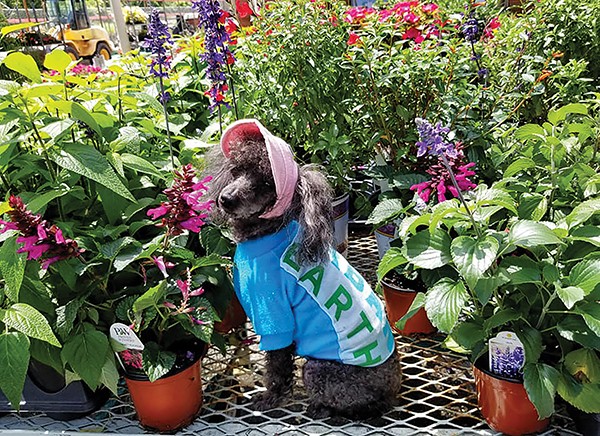 Bee Garriott/Facebook
Bee Garriott/Facebook
Bee
Bee
“People come in here just to see her,” says Martha Garriott. “They know her name, and they don’t know mine.” Garriott’s referring to her toy poodle, Bee, the unofficial supervisor at Urban Earth Garden Center. Bee’s smaller than many of the lawn ornaments and flower pots the center sells, but she’s doing big, important work. From her post — a comfy bed, layered with toys, atop a tall chair behind the counter — she oversees the store. “Any time I ring up a sale, I have to put her in the chair to get on the register because she’ll bark if I don’t,” Garriott says. “She has to watch me to make sure I do it correctly.”
Bee, a former champion show dog and breeding dog, was rescued by Garriott three years ago and has been working at Urban Earth since 2017. Her duties include greeting customers (who often bring her treats and toys), modeling products for the center’s Facebook page, and providing pet therapy to her co-workers.
When Garriott first brought her home, she says, “Bee had never been on grass, she didn’t know what grass was. She had never been allowed to jump, and I don’t think she knew how to bark, she was so quiet for so long. But she’s got a very good life now. Everybody loves her.” — Shara Clark
Say hi to Bee at Urban Earth Garden Center, 80 Flicker Street.
 The Peabody Memphis
The Peabody Memphis
Peabody Ducks
Peabody Ducks
Just like clockwork, every day at 5 p.m., after six hours of paddling around in the Peabody Hotel lobby fountain, the illustrious Peabody ducks are ready to retire to their posh Duck Palace on the rooftop. Their “valet,” head Duckmaster Doug Weatherford, steps down before the crowd of eager children and families to announce the ducks’ march back upstairs.
“All that remains is to play the John Philip Sousa ‘King Cotton March’ and march our five feathered friends single-file up the red carpet into that elevator en route to the palace on the rooftop,” he proclaims. “You, too, will have been an eyewitness to the world-famous march of the Peabody ducks!”
The five mallards — one brightly colored male and four females — step onto the red carpet and march back to their humble abode, where they will live for 90 days before they are sent back out into the wild and five of their friends come to take their place. Until then, this team of ducks will continue to enjoy their five-star Peabody Hotel experience, complete with room service — we hear the ducks turn their beaks up at iceberg lettuce, so they receive the finest romaine — and personal showers dealt by Weatherford himself.
“They’re wild animals, so we don’t give them names, and they only ‘work’ for us for 90 days,” says Weatherford. “Our object here is to make sure that they’re healthy and that they remain as unchanged as possible.” — Julia Baker
Watch the ducks march (11 a.m. and 5 p.m. daily) at The Peabody Memphis, 118 S. Second.
 T. Clifton Gallery
T. Clifton Gallery
Argus
Argus
A low bark — almost a grunt — was heard when I entered T. Clifton Art and Custom Framing Gallery. The sound came from a huge ball of fur on the floor. It was Argus, a chocolate St. Bernard who, at the age of 10, is a Broad Avenue legend. The gallery even sells T-shirts bearing Argus’ likeness.
“He’s come to work with me every day since he was 7 weeks old,” says gallery owner Tom Clifton. And this is a gallery filled with glassware, some items priced at thousands of dollars, on open shelves. “Ever since he was a puppy, he’s never broken a thing.”
Argus isn’t a guard dog per se, but he “senses things I don’t,” Clifton says. He’ll let out a “woof, almost a grunt,” which is fitting because Clifton named Argus after a mythological Greek “warrior guard.” Argus, who’s been in FedEx TV commercials and various fashion shoots and brought cheer to nursing homes, is recognized when Clifton goes out.
The first time Clifton saw Argus, he was in a pen with other puppies. Argus walked up to the side of the pen, put his paw on the edge, and stared at him. “That was it,” Clifton says. “From that moment, we’ve been inseparable.” — Michael Donahue
Visit Argus at T. Clifton Art and Custom Framing Gallery, 571 Broad Avenue.
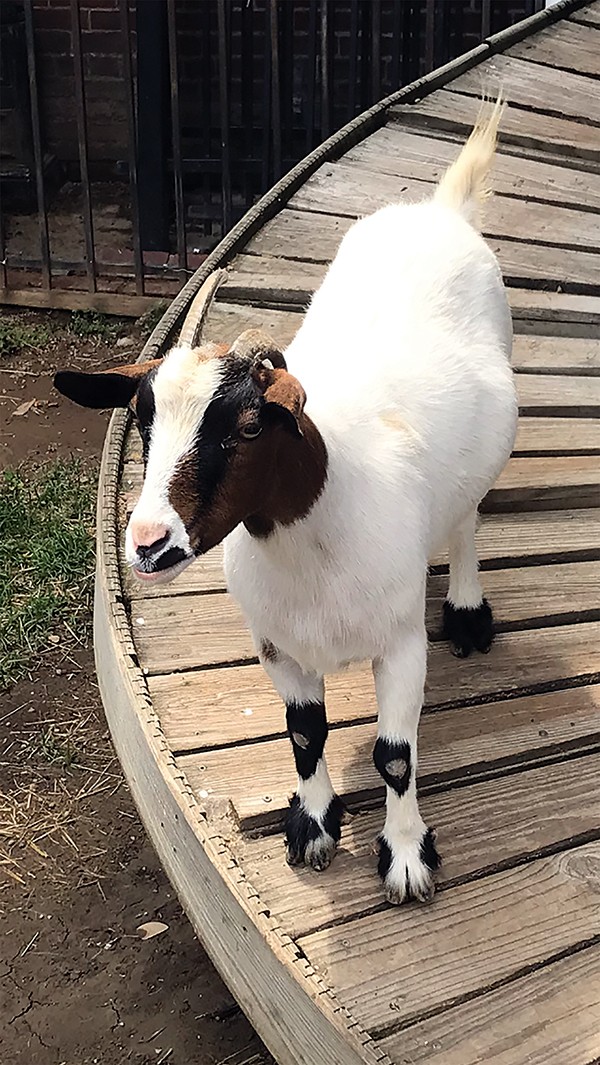 Bruce VanWyngarden
Bruce VanWyngarden
The Goats of Beale
The Goats of Beale
Angelina and Zena are a pair of 5-year-old goats who patrol the west side of the patio at Silky O’Sullivan’s on Beale. They are the fourth pair of goats to inhabit the famed joint since it opened in 1992, a result of a brainstorm by the club’s legendary founder, the late Silky Sullivan. “A goat named Puck is part of Irish mythology,” says club senior manager Jay Wells. “And Silky thought goats would be a great fit for the club. And they have been. People come from far and wide to see them, and they love visitors.”
The goats’ quarters, which include ramps and steps and private spaces, are separated from the customers by a couple of fences, mostly to keep patrons from feeding them or, worse, giving them beer. But Wells let me get up close and personal with A and Z, and let me tell you, they are the sweetest animals you could imagine, affectionate and curious and more than happy to nuzzle faces with their visitor.
“They have a better health plan than I do,” says Wells. “The vet comes regularly to trim their hooves and horns and check them out. They come from a goat farm near Atoka, which is where they retire at some point.”
And what do they eat? “Purina Goat Chow,” says Wells. Well, that, and the saltine crackers I gave them.
— Bruce VanWyngarden
Meet Angelina and Zena at Silky O’Sullivan’s, 183 Beale Street.
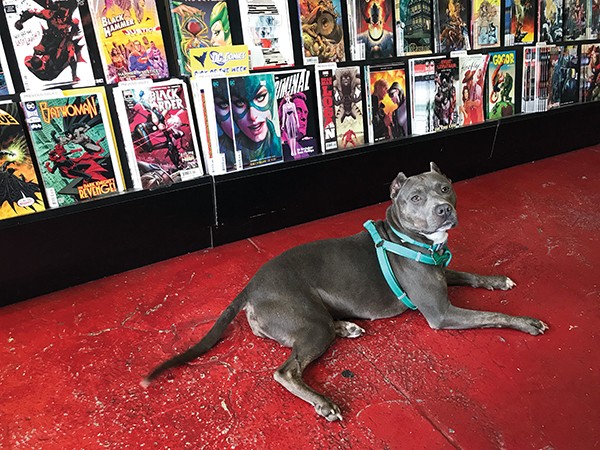 Jesse Davis
Jesse Davis
Zen
Zen
It’s the most common trope in comic books — the traumatic origin story. Wolverine underwent horrible experiments. Ditto Rocket Raccoon, X-23, and the Winter Soldier. Well, real-life comic dog Zen might have them all beat.
“We think she was a bait dog because her ears are clipped, and they’re not professionally clipped. And she had gnarly scars on her head and her legs. She’s filling in now, but she was skinny. She was rough,” says Shannon Merritt, co-owner of 901 Comics and 901 Games and dog-father to Zen.
Like Professor X giving Wolverine a home, Merritt found Zen at Memphis Animal Shelter, whisked her away, and gave her a new home and a new purpose — to patrol the aisles of the comic store, nosing out head-scratches and belly-rubs from customers.
Patrons of 901 Comics will doubtless remember M.J., the mascot of Merritt’s Bad Dog Comics line, who lost her battle with cancer in the winter of 2018. “I had a real tough time when M.J. passed,” Merritt says, though Zen is doing her best to fill the pit-bull-sized hole in his heart. The pair stick together and support each other. “She comes with me whenever I’m working,” Merritt says. “She’s okay with everybody coming in here.” — Jesse Davis
Rub Zen’s belly at 901 Comics, 2162 Young Avenue.
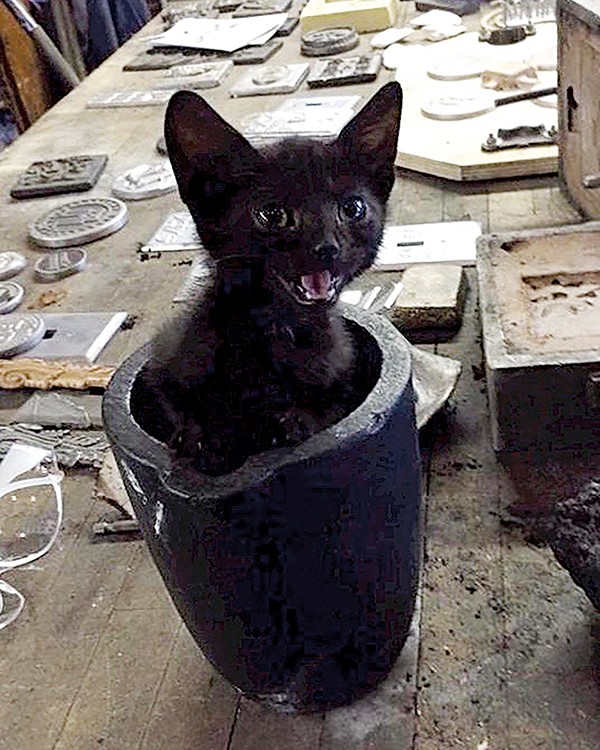 Metal Museum
Metal Museum
Spatz
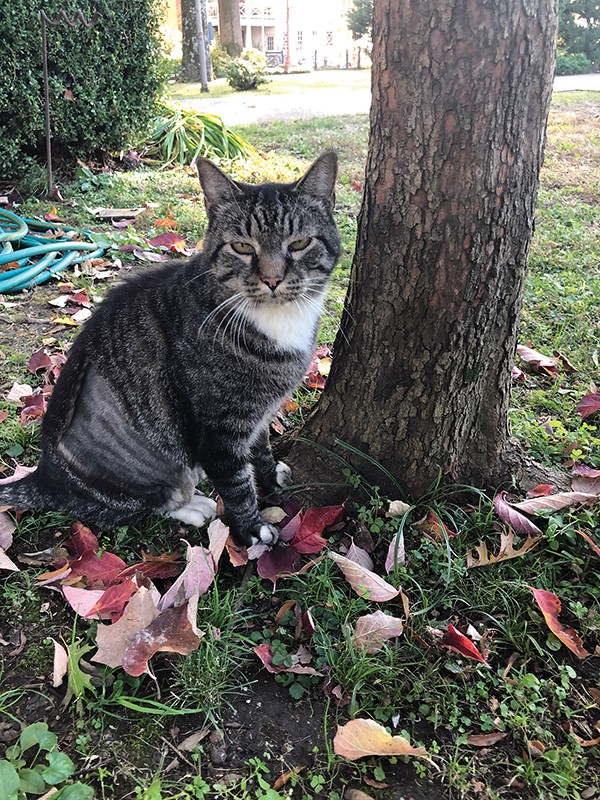 Metal Museum
Metal Museum
Mr. Fuller
Spatz and Mr. Fuller
If there’s a sweeter gig than bookstore cat, it can only be museum cat. What better way to pass the time than to pad about the museum grounds keeping an eye out for pests — or for friendly tourists willing to bestow belly rubs? Indeed, resident Metal Museum cats Spatz and Mr. Fuller have it made in the shade. Mr. Fuller is a lazy tabby who showed up in 2008, and Spatz, the wilder of the two, is a black cat who made his first appearance in 2015.
Don’t be fooled by their sweet gig, though, the cats do work. They’re mascots, says youth initiative coordinator Darcie Beeman-Black, who has incorporated the cats into the educational materials for youth groups, like the “I Spy” program and Spatz’s scavenger hunt. Even the cats’ names are teaching tools. “A fuller is a tool in the blacksmith’s shop. It’s a peg that fits perfectly into a slot of the same size, and they use it to make curves in metal,” Beeman-Black explains. “Spatz is the protective covering you wear over your shoes in the foundry. They named him Spatz because when he was a kitten, he was always at your feet.
“They are tough cats. They’re in the shop a lot,” Beeman-Black adds. When they aren’t in the shop, they can be seen lounging around the grounds. Mr. Fuller can usually be found near the sculpture of an ant. “You can just walk up to him and scratch his belly,” Beeman-Black says. “He’s really sweet.” — Jesse Davis
See Spatz and Mr. Fuller at the Metal Museum, 374 Metal Museum Drive.
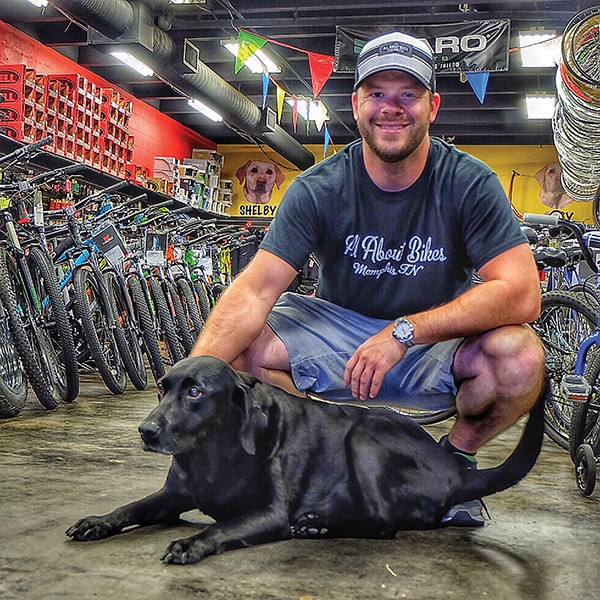 Jon Sparks
Jon Sparks
Molly
Molly
Molly greeted me at the door to All About Bikes with a wag and a cold nose. “Come in,” she said, “and try out one of our Baja Trikes. They’re a nice, easy ride for Boomers.” I glared at her: “Are you saying I’m old?” I barked. She looked back with kindly, soulful eyes and nuzzled me saying, “It’s okay, I’m 12 years old, so I’m sympathetic. We can get you a comfortable seat as well.”
I harrumphed and looked at Tommy James, the shop’s co-owner and devoted minion to Molly. Ignoring my snit, he explained the store was formerly All About Pets, and you can see the one-time resident dog Shelby memorialized on the back wall. The mission changed, but a canine presence was preserved, and sweet, laid-back Molly has the run of the place, sometimes going out front to take in the air and receive visitors who often will come by just to say hi to her. Tommy doesn’t seem to take offense. I scratch Molly behind the ears and say, “Okay, you got something in a comfort bike?” She gives me a nudge. “Walk this way,” she says. “I got you.”
— Jon W. Sparks
Let Molly assist you at All About Bikes, 621 S. Mendenhall.
 Bass Pro
Bass Pro
Bass Pro
Fish, Ducks, and Alligators (Oh my!)
“There he is! There’s the surgeon!” That was the cry from a youthful visitor to the Bass Pro Shops at the Pyramid during a visit last week. The lad, who was eager to communicate his excitement to a group of peers being squired by adults, was no doubt a vacationer from elsewhere, like many, perhaps most, of the visitors to the Memphis riverside attraction.
The young man was verbally mistaken; there was no doctor swimming in the pool where he was pointing. But there was a bona fide sturgeon — a big fish that was clearly an exotic being, a long, silver eminence among the dark lesser spawn swimming in the murky waters on the Pyramid floor. It’s not the dolphins at SeaWorld, but these aquatic creatures are an attraction all the same for the people who come to the Bass Pro Pyramid, not only to purchase outdoors ware but, it would seem, to get a whiff of the natural outdoors world while they’re at it.
The fish are real; so are the ducks in another pool, and the alligators swimming in a tank near the elevator. There are other wild creatures on view at Bass Pro — bears, moose, wild boars, for example, but these are stuffed animals or facsimiles of the real thing. Not working stiffs like the fish and the ducks. Just plain stiffs. But they all, real or fabricated, earn their keep.
— Jackson Baker
See the creatures of the great outdoors indoors at Bass Pro Shops, 1 Bass Pro Drive.
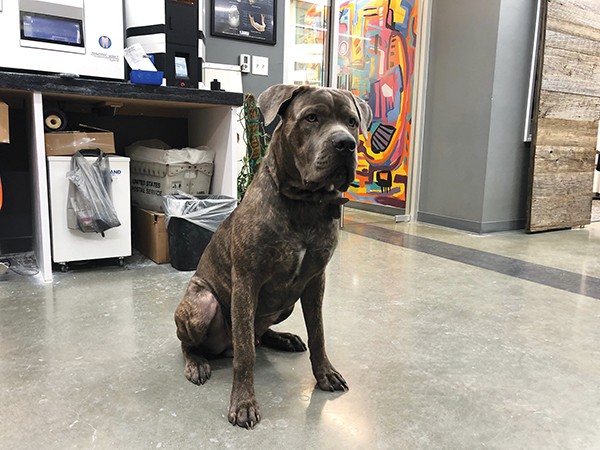 Maya Smith
Maya Smith
Axel
Axel
While brothers Darin and Josh Throndson are busy making teeth and other dental supplies at Innovative Dental Technologies’ lab in Crosstown Concourse, Axel, their chocolate brown cane corso, is there for moral support. Only a year old, Axel already weighs about 120 pounds. He’s giant but gentle, they say.
The brothers say tug-of-war is one of his favorite pastimes. He also enjoys the dog park on the Crosstown campus. But, their friendly companion spends most of the work day sleeping. And he’s a snorer. The brothers say the snoring is sometimes distracting but a reliable source of laughter.
Since Crosstown is dog-friendly, Axel comes to work every day with the brothers, who work long hours, sometimes 60 hours a week. “He’s good company and it’s allowed, so why not bring him?”
He’s been coming to the lab since he was a puppy. The brothers carried him to the fourth-floor office in a laundry basket until he was big enough to walk. When Crosstown regulars see Axel now, they are surprised that this is the same dog that had to be carried in a basket, the brothers say.
— Maya Smith
Axel’s hard at work at Innovative Dental Technologies, 1350 Concourse Avenue, Suite 450.
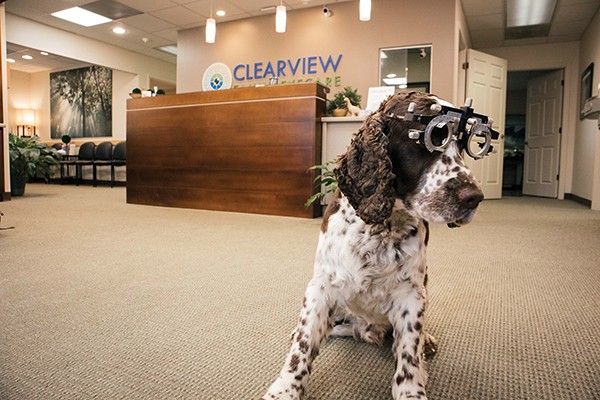 Daniel McGarry
Daniel McGarry
Buster
Buster
When I walk into Clearview Family Eyecare, Buster is on the receiving end of joyful head-scratches being doled out by a curly-haired toddler while her parents finalize their appointment. According to his owner, Dr. Seth Salley, he’s the clinic’s Chief Happiness Officer or CHO.
His primary duty, aside from rigorous napping, is greeting people. “When he hears somebody walk in, he comes out and sniffs them and says hi,” Salley says. “And then he sits on people’s feet.” His presence also tends to take the edge off for nervous patients. “I had an autistic kid in here a couple of weeks ago, and he was talking to Buster and me. When we got through the exam, his mom said, ‘I don’t know what happened, but he never talks to doctors … I think it was Buster.’ He just has that effect.”
Buster, 5, is an English Springer Spaniel imported from Sweden by breeders in Mason, Tennessee. “He was a breeding prospect, but they told me, ‘He’s so laid-back, he won’t breed.'” He’s been working as Clearview’s online mascot, welcome crew, and calming agent since he was adopted six months ago. His Swedish export pedigree papers list his given name as Big Brazzel Dragon Fly, but at the request of Salley’s kids, they renamed him Buster, after Andy’s dog in Toy Story. — SC
Feel Buster’s serenity at Clearview Family Eyecare, 618 Oakleaf Office Lane, #100.
 Toby Sells
Toby Sells
Lucy
Lucy
When Lucy does her job, there are no good options. “If you’re right, it’s bad,” says K9 Officer Brian Jenkins. “If you’re wrong, it’s bad, just in a different way.”
Lucy is a German Wirehaired Pointer, a stocky, beautiful dog with a gray/chocolate coat. Brimming with energy, she bursts through a door at Memphis International Airport, and her nose immediately goes to the ground. Over a bag, behind the gate desk, and up and down the rows of empty seats, Lucy hunts bombs. Lucy was trained at Lackland Air Force Base. Some of her kennel mates joined the military, sniffing out explosives in Iraq and Afghanistan. Lucy met Jenkins and came to Memphis, keeping the airport here safe with the Transportation Security Administration.
After a few more sniffs, Lucy sits. Jenkins throws her a tennis ball, pets her head, and praises her good work. It was a training exercise, of course. If it was real, only bad options would be left. It’s either a “multi-million-dollar mistake” to dump the concourse, re-screen passengers, and recall aircraft, or, “there’s a bomb in my airport,” Jenkins says. Lucy just thinks she’s playing, though. Yes, she goes home with Jenkins at night. And, yes, “she has her own bedroom.” But, no, you should not pet Lucy. She’s working to keep you safe, and pets from strangers aren’t part of her training. — Toby Sells
See Lucy in action — no touching, please! — at Memphis International Airport, 2491 Winchester Road.
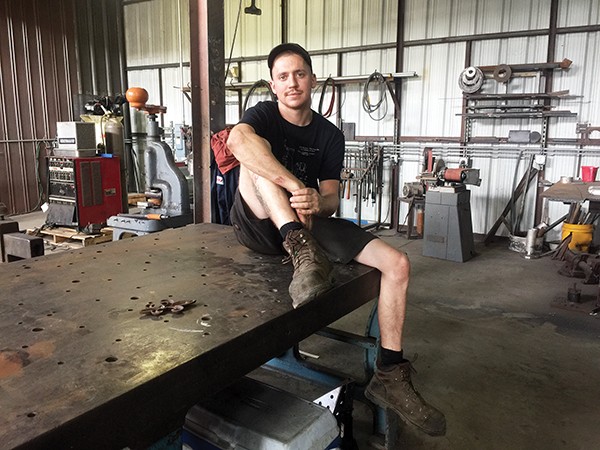
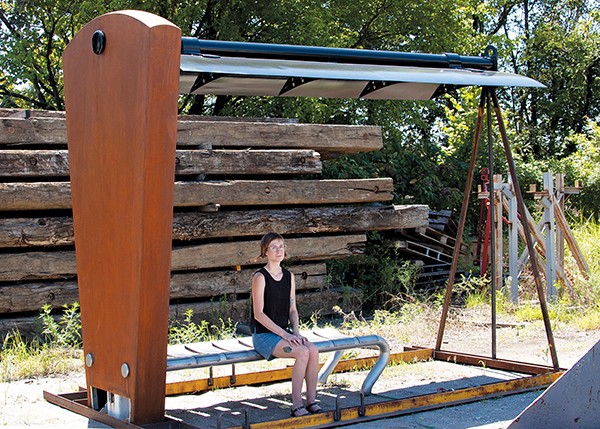

 Bee Garriott/Facebook
Bee Garriott/Facebook  The Peabody Memphis
The Peabody Memphis  T. Clifton Gallery
T. Clifton Gallery  Bruce VanWyngarden
Bruce VanWyngarden  Jesse Davis
Jesse Davis  Metal Museum
Metal Museum  Metal Museum
Metal Museum  Jon Sparks
Jon Sparks  Bass Pro
Bass Pro  Maya Smith
Maya Smith  Daniel McGarry
Daniel McGarry  Toby Sells
Toby Sells 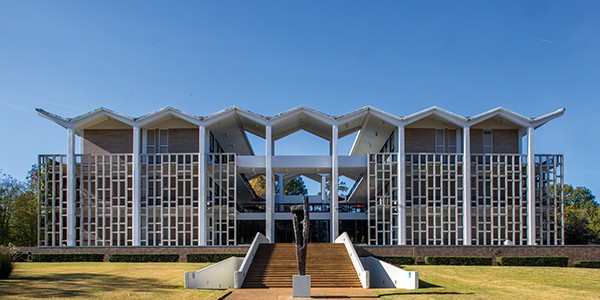 Photographs by Justin Fox Burks
Photographs by Justin Fox Burks  Metal Museum/Facebook
Metal Museum/Facebook 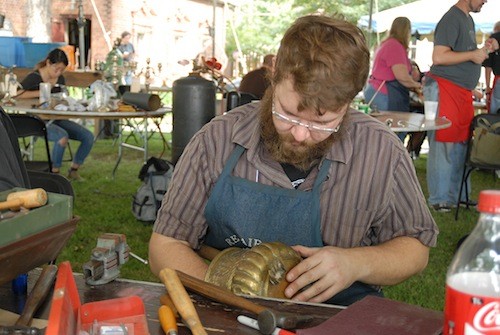

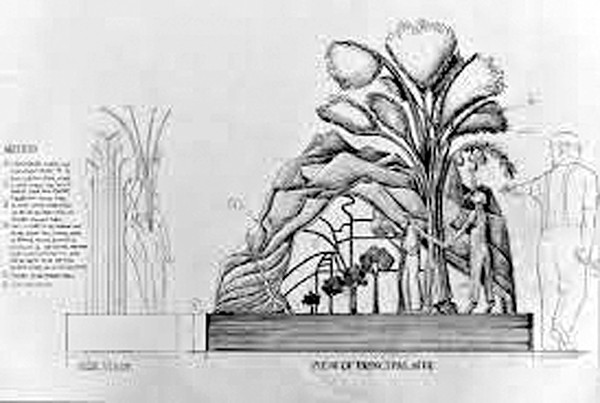
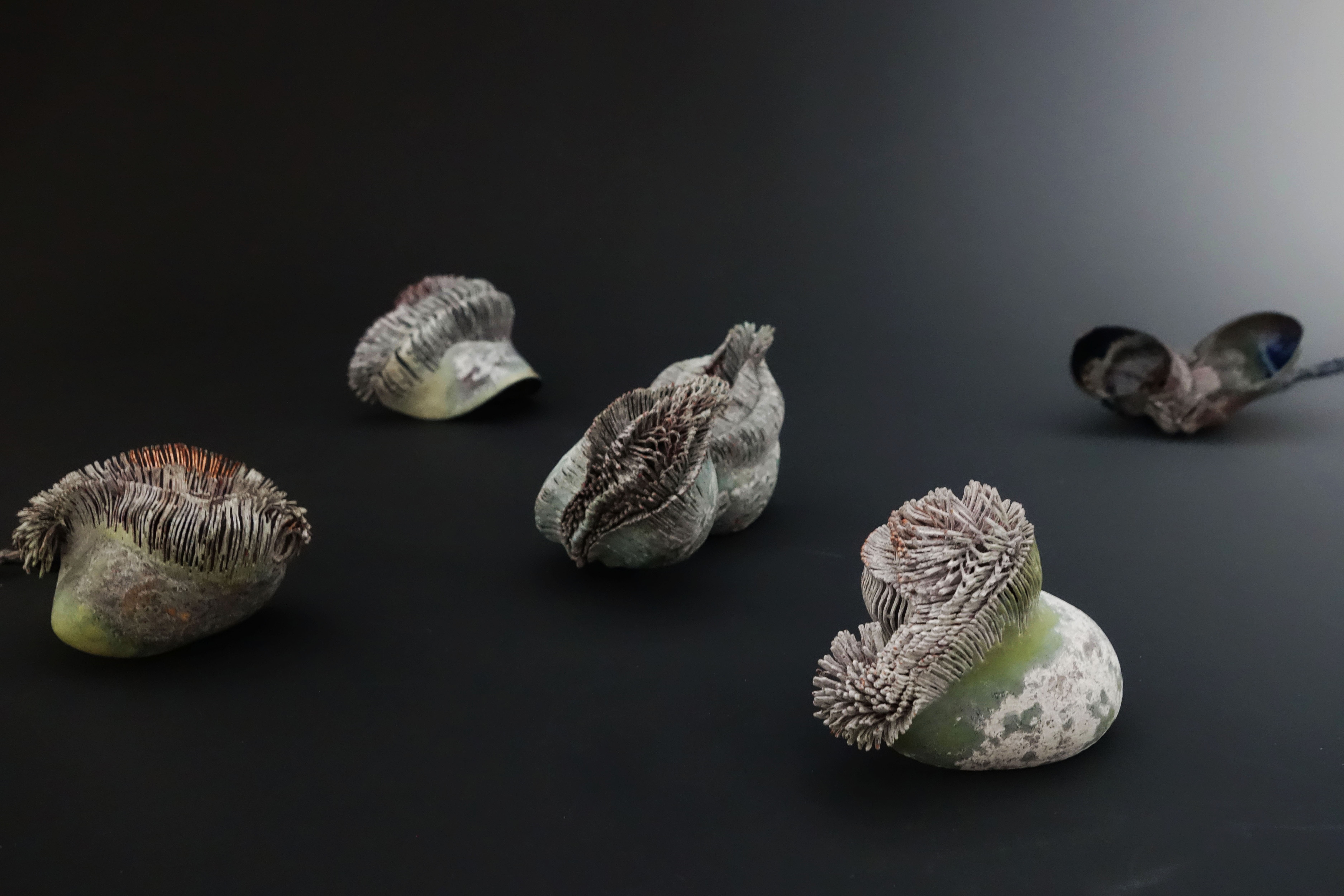 Visual Cues, Ms. Chen, Ting-Chun
Visual Cues, Ms. Chen, Ting-Chun  Soliloquy, Ms. Ou, Li-Ting
Soliloquy, Ms. Ou, Li-Ting  Flavour, Ms. Chen, Siou-Yi
Flavour, Ms. Chen, Siou-Yi 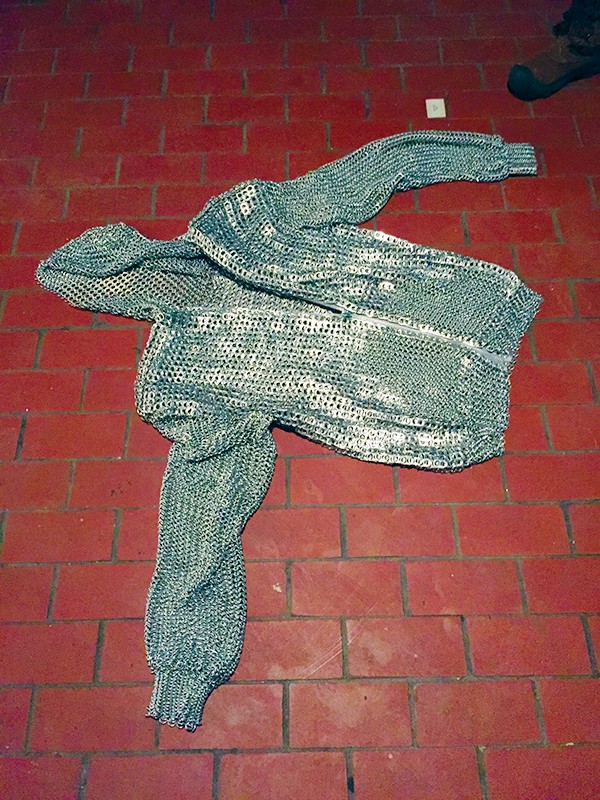
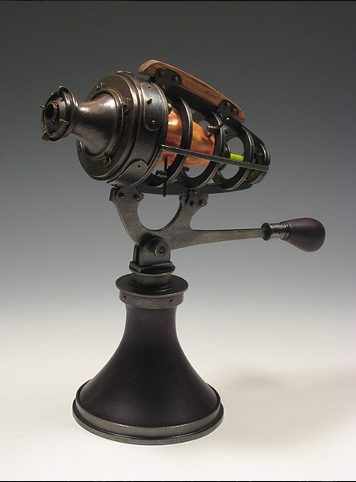 David Clemons, ‘Senescopia’ (2007)
David Clemons, ‘Senescopia’ (2007) 
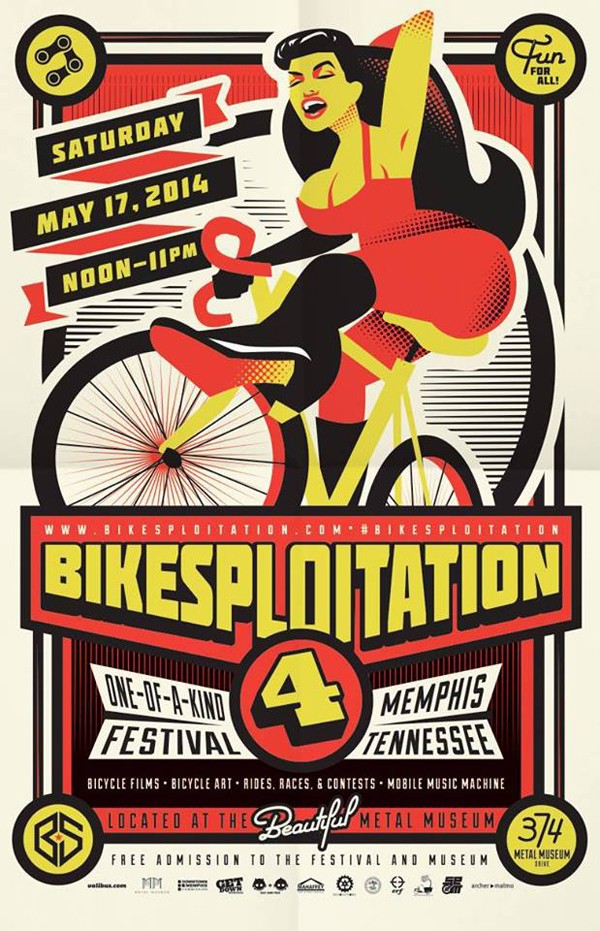
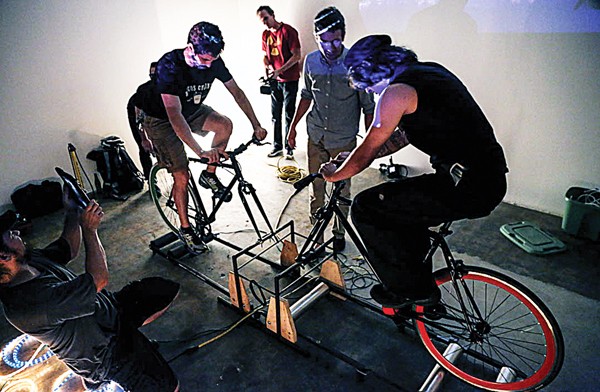 valibus.com
valibus.com